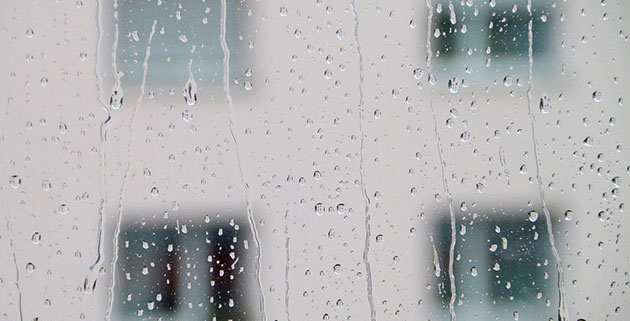Waterproof Your Basement – Chicago Tribune – 12/9/2000
Keeping your basement watertight starts with the initial construction.
Why Oak Hill installs double drain tiles and oversized sub-pumps in their homes.
Waterproof Your Basement – Chicago Tribune – 12/9/2000
Article Source
If you like bargain prices, you’ll want a basement in your new home. Basement space is some of the least expensive living space you can get in a new house.
But a basement that turns into a swimming pool or has several small streams flowing through it every time it rains is virtually useless. If you want your new basement to be bone dry, like my 15-year-old basement, it must be waterproofed early in the construction process.
If you are like many homeowners I talk with, you think the thin black substance sprayed on foundation walls is waterproofing. In almost all cases it isn’t. Commonly the builder is applying an unmodified, asphalt-based, damp-proofing product. Damp-proofing is a low-cost method of retarding water infiltration; it is by no means a true waterproofing membrane.
Damp-proofing products are generally asphalt- or tar-based compounds sprayed onto foundations prior to backfilling. Concrete and other masonry products will easily transmit water vapor, so these products are designed to block water vapor transmission. This, basically, is the extent of their capabilities. Damp-proofing compounds generally become brittle after they dry. They also do not have the ability to bridge cracks, and groundwater can actually dissolve the compounds over time.
Waterproofing compounds are much different. There are a wide variety on the market: urethanes, modified asphalts, and clay- and rubber-based products. They are either spray-applied or come in sheets.
Waterproofing membranes have several distinct characteristics: Groundwater has little or no long-term effect on them; they can bridge small foundation cracks; they usually retain their elasticity; and some actually have self-sealing properties.
Waterproofing compounds are able to resist a hydrostatic head, which develops when water builds up against the side of your foundation. The pressure can be enormous. I’ve seen a stream of water squirt two feet out onto a basement floor.
There are many things that you can do to help ensure that your basement stays dry. First, be sure your foundation is constructed as strongly as possible. Install as much reinforcing steel as practical to ensure that in the event a crack occurs, it will not widen or displace. Consider increasing the thickness of your foundation walls. Remember, no waterproofing compound can bridge a major structural crack. Your first line of defense is a strong, crack-free foundation.
Install an excellent foundation drainage system. Use plenty of large, washed gravel over the foundation drain tile. Two feet is the minimum thickness, but 3 feet would be better. Make sure your builder covers the gravel with 4 inches of straw or tarpaper before backfilling. This is a commonly overlooked step. These materials prevent silt from the fluffed backfill dirt from clogging the gravel and the drain tile system. Geotextile fabrics are available for this same purpose, but straw or tarpaper will work just fine if installed correctly.
Be sure the ground slopes away from all points of the foundation at least 6 inches in vertical height for the first 10 feet of horizontal distance. Pipe downspouts and sump discharge pipes away from the house. Do not let this water collect or discharge at the base of the foundation.
Check with your building department for local code requirements. Many building codes accept damp-proofing if the basement will have no finished living space at the time the house is complete. But if you decide to finish your basement at a later date, it’s virtually impossible to properly waterproof the foundation.
———-
Write to Tim Carter, c/o The Chicago Tribune, P.O. Box 36352, Cincinnati, OH 45236-0352. Or contact him on the Internet at askthebuilder.com.
For a list of manufacturers of exterior applied foundation waterproofing compounds and other details to minimize water infiltration, send $3 and your name and address to Tim Carter at the above address. Ask for Builder Bulletin No. 18.



